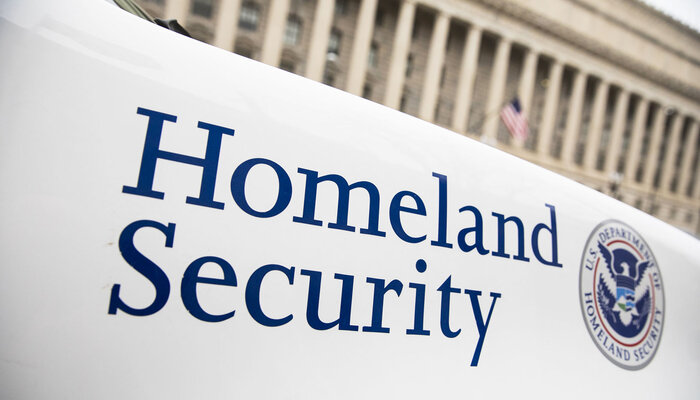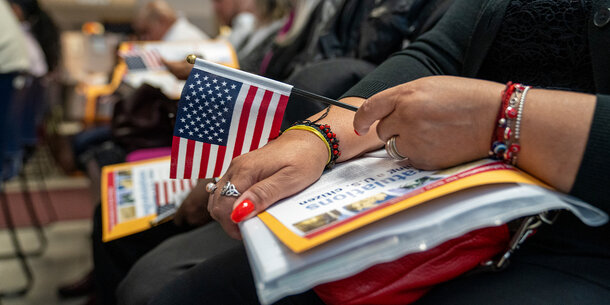The Department of Homeland Security’s grant program to prevent terrorism and “targeted violence” has long been criticized for funding projects that put innocent Americans and minority communities at risk while failing to benefit national security. Rather than fulfill a campaign pledge to end the Targeted Violence and Terrorism Prevention program, the Biden administration instead gave it a new name — the Center for Prevention Programs and Partnerships — and a new directive: countering violent white supremacy. A new Brennan Center analysis finds the grant program doesn’t live up to this promise and remains plagued by fundamental flaws, bias, and a reliance on ineffective methods. DHS should abandon the program altogether.
The grant money goes to state and local governments, universities, and nonprofits that use it to train community members, health care workers, and social service providers to police their neighbors for potential, often tenuous, indicators of violence. Our review of grant applications under the program in 2020 and 2021 — the most recent records available — shows DHS’s changes don’t reflect a serious shift toward combating white supremacist violence. Instead, the department has continued to fund projects that operate under flawed assumptions about violence, fall outside the program’s scope, or lack a proven track record of success in preventing violence.
Strikingly, in the year following DHS’s promised shift, only 3 out of the 37 projects funded in 2021 have programming that specifically addresses white supremacists. Two of those use debunked methods, and the third encourages white and Black artists to record music together in the name of fighting racial hatred — a nice idea, but it hardly qualifies as violence prevention. Other grant recipients don’t mention white supremacy at all, or only in passing.
Some DHS grants directly undermine the stated focus on white supremacist violence, equating violence from the far left and the far right, despite fatalities from far-right attacks in the last decade being 19 times greater than those from the far left. Instead of focusing on violent white supremacists, the grant recipients more often target marginalized communities long harmed by overbroad counterterrorism efforts. A number of grantees, for instance, still name “jihadism” and “Islamic extremism” as key focus areas.
DHS’s revamped grant program also still relies on the disproven assumption that there is a clear path from adopting dangerous ideas to committing violence that can be identified and interrupted. For years, this theory has flagged people experiencing social or economic hardship, engaging in political expression, or in need of mental health treatment as potential threats to national security. Research has shown this premise is false. After all, millions of Americans who exhibit these so-called red flags of radicalization — which can be as vague as “identity struggles” or lacking a “sense of belonging” — never go on to commit violence. In reality, proponents of this theory of radicalization misunderstand religious practices, scrutinize common behavior, and foster biased targeting.
The targeting of marginalized groups is supercharged by the role of law enforcement in DHS-funded projects. The department has claimed to seek alternatives to law enforcement involvement, but that is just not true: police and intelligence agencies participated in 86 percent and 78 percent of the projects funded in the 2020 and 2021 cycles, respectively. Their participation increases the likelihood that bogus behavioral indicators will be used to justify gathering information about activists and people in marginalized communities. In a telling example of how these collaborations can subject a large swath of innocent Americans to needless government scrutiny, one grantee’s initiative aims to train 500 law enforcement officers over two years to encourage community members to report suspicious activity, which includes taking a “hard stance” on beliefs.
Similarly, the administration’s assurance that the revamped program would safeguard civil rights and civil liberties has fallen by the wayside: only 30 percent of DHS’s grantees in 2021 and 21 percent in 2020 allude to constitutional protections, generally in passing and without implementing concrete safeguards.
DHS has failed to show that this fumbling, decade-long effort to identify and stop would-be violent actors has made the country any safer. As with previous iterations of the program, the revamped version doesn’t properly measure whether the projects it funds successfully reduce domestic terrorism threats. Grantees do not provide specific metrics that can be used to gauge their performance, and project records rarely include any details about their methodologies. All this makes it impossible for the government or the public to determine their effectiveness.
What is clear is that DHS’s rebranded program fails to deliver on its promise to prevent terrorism. The department hasn’t meaningfully shifted tactics to confront white supremacist violence either. Instead, it has continued to award grants that favor evidence-free assumptions about identifying potential threats in ways that invite bias and endanger Americans’ constitutional rights. And it has not ensured that the projects it funds are enhancing national security.
A new name can’t hide the continuing failure of this program. As the Brennan Center has said for years, it is long past time to end it.



